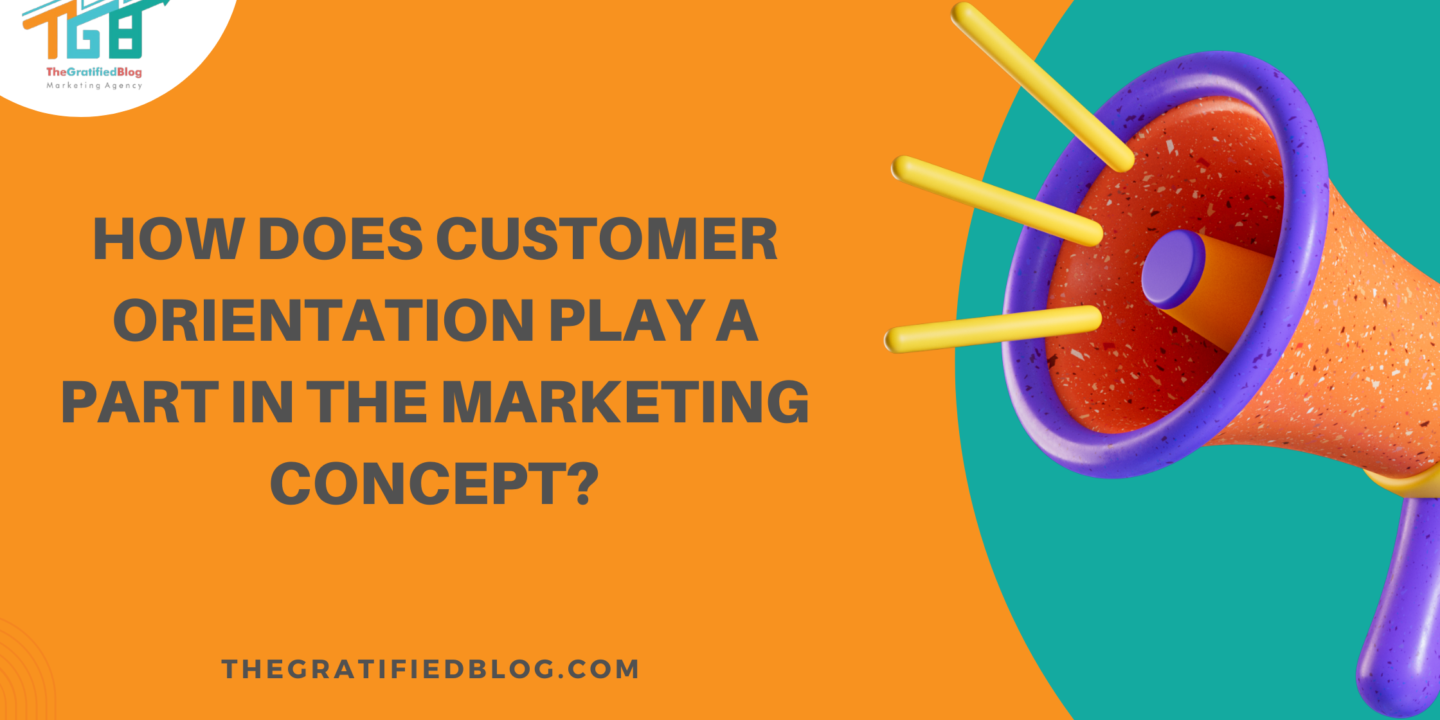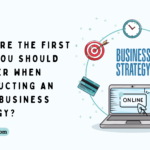
Welcome to our blog, where we delve into the intricate relationship between business success and customer orientation, exploring the question: How does customer orientation play a part in the marketing concept? In today’s dynamic and customer-centric business landscape, understanding the pivotal role of customer orientation in shaping effective marketing strategies is paramount. Join us as we navigate the nuances of customer-centric approaches, unraveling how businesses prioritize and align their efforts with customer needs to thrive in the competitive marketing realm.
A Brief Overview Of The Marketing Concept
To fully understand the importance of customer orientation within the marketing concept, it is essential to have a brief overview of the overall concept itself.
The marketing concept is a business philosophy that revolves around putting the customer at the center of all marketing efforts. It is based on the belief that businesses should identify and fulfill the needs and desires of their target customers in the most effective and efficient ways possible.
At its core, the marketing concept seeks customer satisfaction and value while driving business growth and profitability. It requires businesses to constantly analyze and understand their target market, identify customer needs and wants, and deliver them in a way that exceeds customer expectations.
Understanding Customer Orientation

Customer orientation refers to the business strategy and mindset that places the customer at the center of all activities and decision-making processes.
It entails a profound dedication to comprehending and fulfilling customers’ needs, preferences, and expectations. Businesses with a customer-oriented approach prioritize customer satisfaction, loyalty, and long-term relationships.
How Does Customer Orientation Play A Part In The Marketing Concept?
Customer orientation is a fundamental aspect of marketing, influencing how businesses approach and implement their marketing strategies. Here’s how customer orientation plays a crucial role in the marketing concept:
Focus On Customer Needs And Preferences
In the marketing concept, businesses prioritize understanding their target audience’s nuanced needs and preferences. Customer orientation ensures a deep comprehension of customer preferences, empowering businesses to personalize their products and services accordingly.
This customer-centric approach enables companies to create offerings that resonate with their audience, nurturing a more profound connection and enhancing the probability of customer satisfaction.
Value Creation For Customers
Customer orientation places a significant emphasis on delivering tangible value to customers. In the marketing concept, this value creation is pivotal for establishing and nurturing long-term relationships and customer loyalty.
Guided by customer orientation, businesses actively seek to provide products and services beyond meeting basic needs, aiming to exceed expectations and deliver meaningful benefits. Companies can distinguish themselves in the market by consistently offering value and building a loyal customer base.
Tailoring Marketing Strategies
Customer orientation plays a vital role in shaping marketing strategies. Businesses thoroughly analyze customer behavior, preferences, and feedback to inform their promotional efforts. This may involve crafting targeted messages, selecting appropriate advertising channels, and designing campaigns that align with the likes and inclinations of the target audience. The result is more effective marketing strategies, creating a connection with customers and enhancing their engagement and conversion probability.
Building Customer Relationships
In marketing, building enduring customer relationships is a central tenet. Customer orientation contributes to this by guiding businesses to engage with customers personally. Businesses foster loyalty and positive word-of-mouth by addressing individual concerns, providing exceptional customer service, and creating positive experiences.
These strong customer relationships contribute significantly to the overall success of the marketing strategy, as satisfied customers are more inclined to become advocates for the brand.
Adaptability To Changing Customer Dynamics
Customer-oriented businesses exhibit adaptability, aligning with the marketing concept’s emphasis on responding to changes in customer preferences and market trends. By staying attuned to evolving customer needs, businesses can adjust their marketing strategies promptly.
This adaptability ensures that businesses remain relevant and effective in the dynamic market landscape, demonstrating a commitment to meeting customer expectations in an ever-changing environment.
Continuous Improvement Through Feedback
Customer feedback is a cornerstone for customer orientation and the marketing concept. Businesses actively collect and leverage customer insights to identify areas for improvement, innovation, and refinement of their offerings.
This iterative feedback collection and implementation process ensures that marketing strategies evolve in response to changing customer expectations, contributing to the continuous improvement of products, services, and overall customer satisfaction.
Benefits Of Embracing Customer Orientation

Customer orientation is not just a buzzword; it carries significant benefits for businesses that embrace it. When companies prioritize understanding and meeting the needs of their customers, they can experience several advantages.
Increased Customer Satisfaction
Embracing customer orientation leads to increased customer satisfaction. By customizing products and services to meet customer needs and preferences, businesses can provide solutions that align with their target audience, fostering elevated satisfaction levels. Loyal customers are often the result of satisfaction, repeat purchasers, and advocates for the brand.
Competitive Edge In The Market
A customer-oriented approach allows businesses to distinguish themselves from competitors. Consistently adapting strategies to meet evolving customer demands gives companies a competitive edge, potentially leading to increased market share and improved profitability in a dynamic business environment.
Enhanced Brand Reputation
Prioritizing customer orientation contributes to an enhanced brand reputation. When customers perceive a company genuinely caring about their needs, trust and engagement with the brand are strengthened. Positive customer experiences generate online reviews and testimonials, reinforcing the brand’s reputation and attracting new customers.
Valuable Insights And Opportunities For Innovation
Customer orientation provides businesses with valuable insights and opportunities for innovation. Listening to customer feedback allows companies to pinpoint areas for enhancement and identify unmet needs. This proactive approach enables the creation and introduction of new products or services, catering to evolving customer demands and driving long-term success and growth.
Effective Problem Resolution
Customer orientation enables businesses to address customer concerns promptly and effectively. This proactive approach to problem resolution enhances customer satisfaction and demonstrates a commitment to customer care. Resolving issues efficiently contributes to positive customer experiences and reinforces the company’s dedication to customer-centric values.
Employee Satisfaction And Engagement
A customer-oriented culture often extends to employees who appreciate working for a company that values customer needs. When employees see the direct impact of their work on customer satisfaction, it can lead to increased job satisfaction and engagement. This positive work environment can contribute to employee retention and productivity, benefiting the business.
How To Implement Customer Orientation In Your Marketing Strategy?

Now that we understand the benefits of customer orientation, let’s explore how you can implement it in your marketing strategy. Here are some critical steps to follow:
Conduct Thorough Market Research:
Performing comprehensive market research is essential for understanding and catering to your target audience. Surveys, focus groups, and data analysis enable businesses to collect valuable insights regarding customer preferences, needs, and challenges.
This proactive approach provides a solid foundation for strategic decision-making and ensures that products and services are aligned with the dynamic expectations of the market.
Tailor Your Products and Services:
Expanding upon the insights acquired through market research, the next step is to tailor products and services to meet customer needs. This involves customization and innovation, whether modifying or developing new offerings.
By aligning your offerings with customer expectations, businesses can enhance their relevance in the market and differentiate themselves from competitors, increasing customer satisfaction and loyalty.
Personalize Your Marketing Communications:
Crafting personalized messages and marketing campaigns is essential for resonating with your target audience. Understanding customer preferences allows businesses to create content that is not only relevant but also emotionally appealing.
Segmenting the customer base and executing focused campaigns guarantee that marketing endeavors are aimed at the distinct requirements and interests of various customer segments, increasing the effectiveness of communication and engagement.
Prioritize Customer Service:
Exceptional customer service is a fundamental element of customer-orientation. Businesses can build trust and loyalty by training employees to provide outstanding service at every touchpoint. Promptly addressing inquiries, concerns, and complaints contributes to positive customer experiences, fostering strong relationships, and boosting the probability of repeat transactions and favorable word-of-mouth recommendations.
Continuously Gather and Analyze Customer Feedback:
Implementing systems for regular feedback collection is essential for maintaining a customer-oriented approach. Whether through surveys, social media monitoring, or direct interactions, gathering customer feedback provides valuable insights into areas for improvement. By analyzing this feedback, businesses can identify opportunities for enhancement, refine strategies, and adapt to changing customer expectations, ensuring an ongoing commitment to delivering value and satisfaction.
Remember, customer orientation is an ongoing process. Regularly reassess your approach based on changing customer needs and market trends. You can establish a competitive edge and stimulate long-term success by consistently putting your customers at the center of your marketing efforts.
The following section will explore real-world examples of companies successfully implementing customer orientation strategies.
Examples Of Successful Companies Embracing Customer Orientation

In the business world, several companies have successfully embraced customer orientation to gain a competitive edge in the market. These companies have recognized the importance of putting their customers at the center of their marketing efforts and have reaped significant benefits.
Amazon
Amazon, is the leading e-commerce giant. Recognizing the power of personalization, Amazon invests heavily in data analysis and customer insights to tailor their offerings and anticipate customer needs. Through features like personalized recommendations and targeted emails, Amazon cultivates a shopping experience that is both seamless and personalized, ensuring customer retention and customers returning for more.
Apple
Apple, is alo known for its customer-centric approach. The success of Apple can be credited to its emphasis on simplicity, aesthetics, and user experience. Through thorough market research and acquiring insights into the needs and desires of its target audience, Apple has developed products that resonate with customers on an emotional level, fostering strong brand loyalty.
Zappos
Zappos, an online clothing retailer, distinguishes itself through a strong commitment to exceptional customer service. Founded by Tony Hsieh, the company is built on a customer-centric strategy, aiming to be known as a service company that happens to sell shoes.
This customer-focused approach begins with Zappos’ flexible employee structure and teamwork emphasis. The company prioritizes customer needs through a dedicated research group employing usability testing, surveys, and interviews.
Zappos stands out by maintaining a 24/7 support staff that goes beyond business discussions, fostering friendly conversations. These initiatives strengthen the bond between Zappos and its customers.
These companies inspire businesses looking to implement customer orientation in their marketing strategies. By studying their approaches and learning from their successes, companies Can establish a culture centered around customers, fostering long-term growth and success.
Conclusion: The Power Of Customer Orientation In The Marketing Concept
customer orientation plays a crucial role in the marketing concept. Companies like Amazon and Apple have demonstrated the power of placing customer needs and desires at the forefront of their marketing strategies. These companies have created seamless and tailored experiences that drive customer loyalty and repeat business by investing in data analysis, personalization, and understanding the target audience.
Implementing customer orientation requires a shift in mindset and a commitment to putting the customer first. It involves conducting market research, gathering customer insights, and continuously adapting strategies to meet evolving customer needs. However, the rewards are significant. By embracing customer orientation, businesses can build strong brands, foster customer loyalty, and drive growth and success.
If you still have any questions related to the blog, then please leave your quesitons in the comment section. We will be happy to answer you.
Thanks for reading 🙂








No Comments